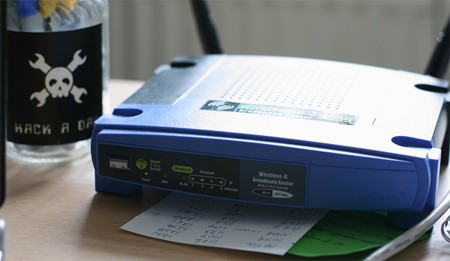
We’ve been tracking Metasploit commits since Matasano’s premature publication of [Dan Kaminsky]’s DNS cache poisoning flaw on Monday knowing full well that a functional exploit would be coming soon. Only two hours ago [HD Moore] and [I)ruid] added a module to the Metasploit Project that will let anyone test the vulnerability (with comment: “ZOMG. What is this? >:-)“). [HD] told Threat Level that it doesn’t work yet for domains that are already cached by the DNS server, but it will automatically wait for the cached entry to expire and then complete the attack. You can read more about the bailiwicked_host.rb module in CAU’s advisory. For a more detailed description of how the attack works, see this mirror of Matason’s post. You can check if the DNS server you are using is vulnerable by using the tool on [Dan]’s site.
[photo: mattdork]













